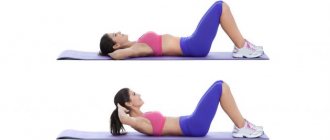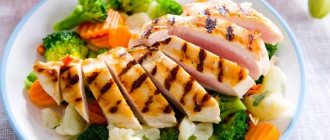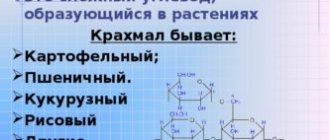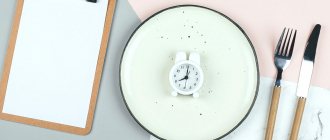A properly designed training program can achieve impressive results. Even when studying at home, girls should adhere to a special lesson plan. For beginners, the entry-level program is suitable. Basic classes chosen by girls with fitness experience. For those who are ready for intense exercise, a difficult level has been developed.
Although the beauty of the human body is considered a purely subjective concept, many women make a lot of effort to achieve their own ideals. But no matter how much effort and time is spent on skincare procedures and exhausting diets, it will not be possible to change volumes and pump up muscles without physical activity.
And here the stumbling block becomes a banal lack of time or financial problems that do not allow you to visit the gym, or even your own complexes associated with excess weight or individual characteristics of your figure. In such cases, training at home would be the ideal solution - a program for girls will allow you to achieve visible results without financial investment and with minimal time investment.
Special Recommendations
If you decide to start training on your own, tips on how to create a home workout program for girls will come in handy. Chaotic exercises carried out without a specific plan will not be able to solve either the issue of a fit figure or the problem of losing weight. You will have to think through all the little things, starting with the set of exercises and frequency of training, ending with the number of approaches and rest time. When drawing up a training program at home for girls, it is necessary to take into account sports training, training goals and the presence of excess weight.
So, women trying to lose weight will have to focus on cardio exercises. And for girls who have good physical fitness, to increase the load, use weights and more strength training, and the number of approaches when performing each exercise.
What do you need for classes?
At the initial stage, you will only need sportswear, shoes and a gymnastic mat. It is not recommended to exercise in home clothes, and especially without special shoes, because the risk of injury greatly increases. And motivation when exercising in sportswear increases significantly.
- For the first few months, you can train with your own weight.
- After 2-3 months it is better to buy weights. These could be dumbbells, weights, an expander or a body bar.
The most profitable option is to purchase collapsible dumbbells, the weight of which can be adjusted and gradually increased. You can use these dumbbells for both upper and lower body training.
Program for Beginners
If you have no sports experience, you shouldn’t rush headlong into exhausting training. You won’t be able to achieve ideal proportions and a toned body with excessive loads.
Any muscles require rest - it is during this period that they not only relax, but also grow. And untrained muscle tissue under the influence of loads becomes hypertonic much faster, which requires longer rest.
Therefore, the home training program for girls who have not previously engaged in fitness provides for no more than three strength training sessions per week with one-day rest intervals between them. The total time of each workout will not exceed 40 minutes. During this period, you need to perform three sets, trying to repeat each exercise as many times as possible, but not exceeding 20. Between each round we take a break of 90 seconds.
Exercises of the 1st workout
Classic squats. We perform regular squats, moving our buttocks back so that our thighs are parallel to the floor.
Lunges from a standing position . We take a wide step forward and bend our leg at the knee. Meanwhile, we touch the floor with our knee to the second limb. We alternate legs when performing lunges.
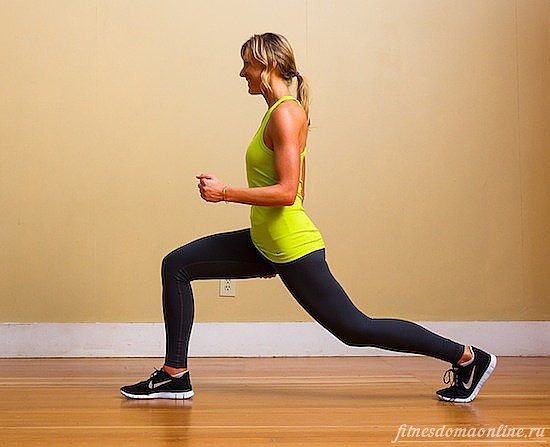
Calf raises . Feet rest on the floor. Slowly we rise on our tiptoes and lower ourselves back.
Straight crunches . From a lying position, lift your upper body as you exhale. The distance between your chin and chest should be no less than a clenched fist.

Push ups . Standing on our knees, we rest on our palms, and with each exhalation we bend our elbows, trying to keep our back straight without lifting our buttocks up.
Exercises of the 2nd workout
Straight lunges.
Reverse push-ups . We rest our hands on the support and our heels on the mat. The whole body should be stretched out. Bending and moving your elbows to the side, lower your body to the floor. As you inhale, straighten your arms.
Swing back. Standing on your knees with your hands resting on the floor, as you exhale, move your straight leg sharply back and slightly up. We alternate swings with both legs.
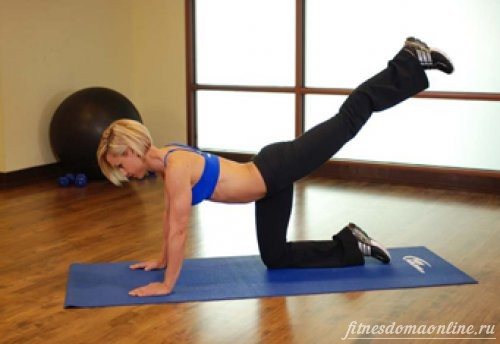
Reverse crunches . Lying on the floor, place your feet on the floor, bending your knees. As you exhale, pull your knees into your chest.
Plie squats. We place our feet shoulder-width apart, with our feet spread apart. Lower your buttocks to the floor, bending your knees.
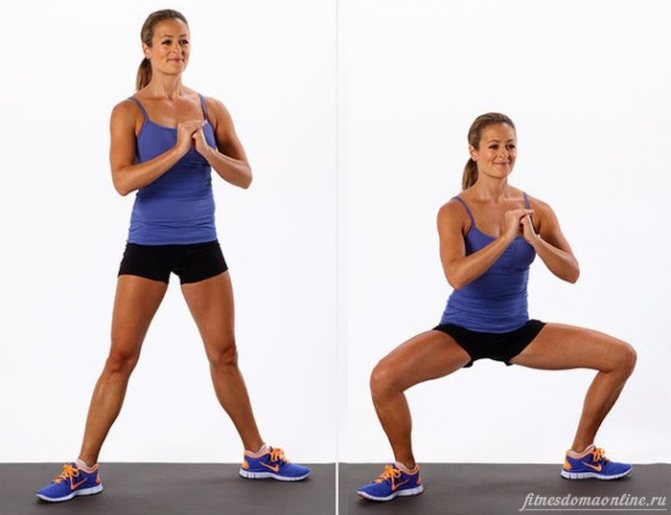
Exercises of the 3rd workout
Classic squats with calf raises.
Chair push-ups . We perform regular push-ups, resting our palms on any elevated support.

Reverse lunges. From a standing position, take a wide step back and lower your knee to the floor. When performing the exercise, alternate legs.
Complex twist . We lie down on the floor. For each exhalation, we simultaneously raise the torso and bent knees up.
Rolling from toes to heels.
Memo for losing weight
A kilogram of fat and a kilogram of muscle occupy different volumes in our body. But, unfortunately, when trying to lose weight solely with the help of diets, it is the muscles that “deflate” first. This is due to the fact that the body, which is under stress (and any diet is stress), begins to intensively defend itself. The reaction of the ancient brain is triggered, for which a sharp drop in daily calories consumed is evidence that the body needs to be put into an emergency state. Fat reserves are deposited, a person loses energy: the body goes into an energy-saving mode, allowing it to survive without food. Therefore, any diet will not give the expected effect if you switch to it abruptly or do not support it with physical activity. What do you need to remember if you want to lose weight?
- The calorie content of dishes should be reduced gradually. You cannot suddenly stop eating fatty, fried meat, sweets and stop frying food in butter if you have been doing this for the last few years. Everything harmful should be eliminated from the diet gradually. If you usually consumed 2000 calories a day, to lose weight you need to reduce them to 1500. But this must be done within three to four weeks, not faster!
- Monitor insulin levels. This hormone transports glucose throughout the body, increasing glycogen stores in the muscles. This substance is necessary for effective training. Insulin rises after each meal, interrupting the processing of fat cells for 1-2 hours. That is, regular snacking with sandwiches, cookies and candy increases weight precisely because insulin production increases. Carbohydrates should be consumed only at strictly defined times and not exceeding the daily dose in accordance with the harmonious calculation of the BJU.
- Exercise regularly. Exercises for beginners are good because they are quite easy and simple to perform. Therefore, there is no need to abandon them: if you trained for two weeks and then abandoned them for several days, there will be no result. To be effective, a serious systematic approach is required. The habit is developed in forty days, so you will have to do all the exercises honestly and regularly for at least a month.
Interesting fact:
Simple walks help you lose weight. Yes, it is absolutely not necessary to run in the morning and evening. Firstly, incorrect running is harmful to the knee joints. Secondly, for some people who are losing weight, going for a walk is mentally easier and more enjoyable than going for a run. The only condition: daily walks must be at least 3 kilometers. Ideally, 6–10, but few agree to such feats.
A basic level of
When exercises for beginners are performed with ease, you can safely move on to the next level. How long it will take for this will depend on both the characteristics of the body and personal diligence.
In fact, by this time the classes had become regular, and the body had become accustomed to the volume of exercise. Therefore, you will have to add new exercises to the program and also use weights. You can use regular dumbbells, but if you don't have them, regular bottles filled with water will do.
At this stage, the number of workouts does not change, and the frequency of repetitions and approaches also remains the same. We begin performing new exercises with weights with 10 repetitions in each approach.
First complex
Squats with dumbbells . We hold dumbbells in our hands along the body. Performing classic squats, we raise the dumbbells forward.
Arm curl . The exercises can be performed both sitting and standing. Holding dumbbells in your hands, turn your hands so that the dumbbells are directed forward. Alternately bending your elbows, pulling your hand to your shoulder.
Reverse push-ups.
Raising arms . We lie down on our backs. Raises straight arms with dumbbells up. As you exhale, we spread them apart, touching the floor. As you inhale, bring your limbs together in front of you.

Oblique twists . We take a position lying on our back. We place our arms bent at the elbows behind our heads, and bend our legs at the knees, raising them so that our shins are parallel to the floor. We bring the elbow together with the knee of the opposite leg. We alternate sides of twisting.
Second complex
Push ups . We complicate the previous push-ups by focusing not on the knees, but on the toes. We try to keep our hands at shoulder level during push-ups. The narrower they are located, the greater the load will be.
Abduction of dumbbells behind the back . Raise both arms above your head, holding dumbbells in them. We alternately bend them at the elbows, placing the dumbbells behind our backs. This exercise is good for tightening your chest.
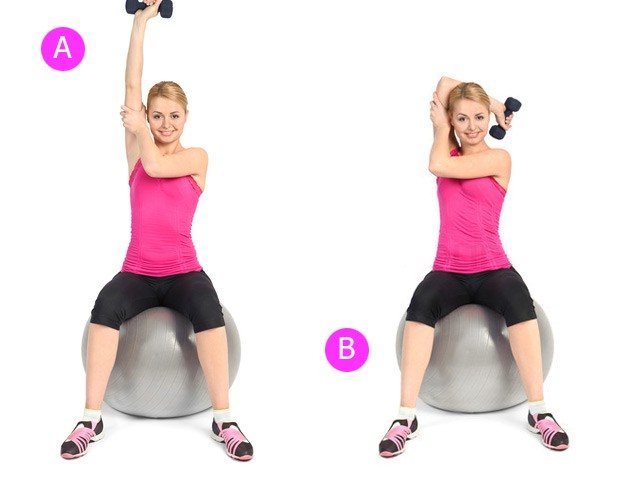
Lunges with dumbbells . In the starting position, we hold our arms with weights along the body. When performing a lunge with your feet, we move them apart.
Arm flexion . You will need a support on which you can rest your knee and hand. This could be the edge of a sofa or bed. We lower the second hand with the dumbbell down. As you exhale, bend your elbow, pulling the weight toward your chest.

Hand touching socks . Lying on a gymnastic mat, we try to reach the toe of the opposite leg with our outstretched hand. We constantly alternate sides. We try to perform the exercise at an increased pace.
Third complex
Plie squat with dumbbells . Performing a deep squat with legs spread apart, we lift the upper limbs with a load up through the sides.
Side lunges . In the starting position, the legs are positioned wider than shoulder width. Hands with dumbbells are located in front of the body below. Bend one leg at the knee, doing a squat to one side. At the same time, we raise our arms in front of the body. After returning to the starting position, we lunge in the other direction.
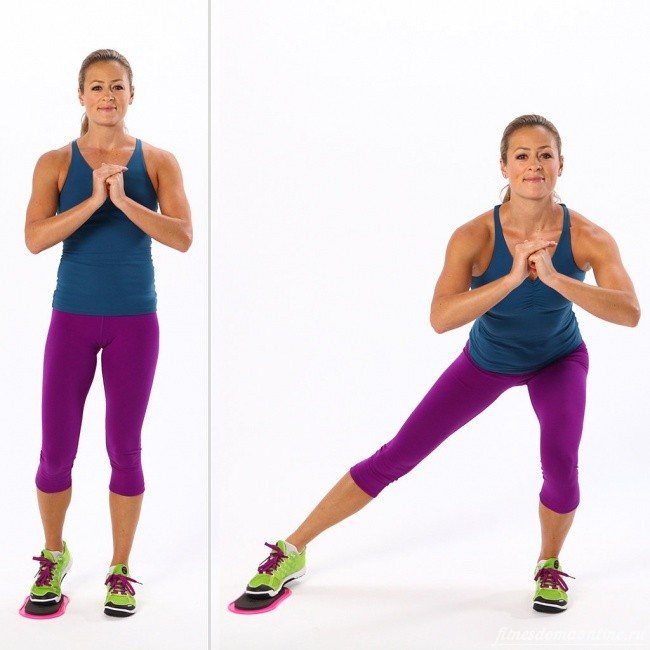
Hand raises . In a standing position, raise one arm with a dumbbell above your head. The second one is located along the body at this time. With each inhalation we change their location. The exercise must be done by tensing the muscles and at a fairly fast pace.
Exercise "bicycle". We lie down on the floor and bend our knees, lifting them off the floor. We alternately straighten and bend our legs, as if we were pedaling.
Swing your legs back . We get down on all fours. We first pull one leg to the chest, and then sharply straighten it, moving it back and up. When performing the exercise, alternate legs.
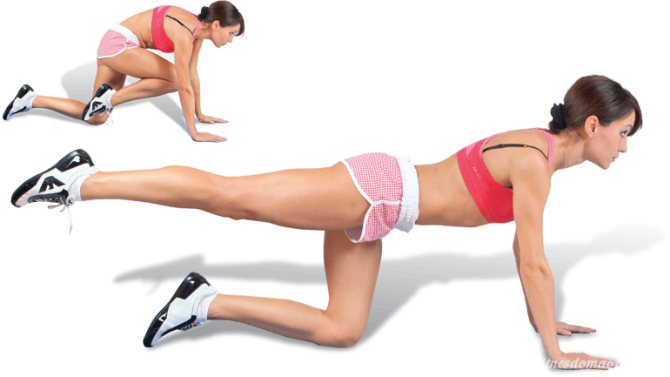
Contraindications and precautions
Strength and aerobic training is contraindicated for girls suffering from joint diseases (arthritis, arthrosis), severe diseases of the cardiovascular system, liver and kidneys.
You should avoid physical activity:
- in the first 2-3 weeks after birth;
- during recovery after surgery and fractures (for a period determined by the attending physician);
- when symptoms of infectious diseases appear (fever, aching joints, cough, headaches, etc.).
To reduce the risk of injury during training, you must adhere to the following precautions:
- 5-6 hours before class, stop eating salty foods;
- use sportswear that completely covers the knee, elbow and hip joints;
- systematically replenish fluid loss by the body during training (every 10-15 minutes take 2-3 sips of clean still water);
- do not use dumbbells that are too heavy (more than 5 kg);
- start strength and cardio exercises only after warming up.
Professional level
You can start intensive training only after you have fully mastered the previous exercises, which you can perform in full. Typically, it is advisable to make the transition to complex training no earlier than after 4-5 months of regular training.
The program is being supplemented with new activities. In addition, the number of classes increases to 4 per week. It is recommended to repeat each action at least 20 times, in each of 3-4 approaches.
Lesson 1
Slow squats with weights . We perform a classic squat, but at a slow pace, lingering for a few seconds at the bottom point. When performing a squat, we raise the limbs with the load in front of us. Follow your squat technique.
Raising arms . Sitting on a chair, we lower our hands with the bottles down. With each exhalation, we move them apart, raising the weight to shoulder level.
Bulgarian lunges . We step back from the chair one step forward. We rest the toe of one foot on the seat of the chair. Bend your knee, lowering your buttocks towards the floor. At the same time, we spread our arms to the sides.
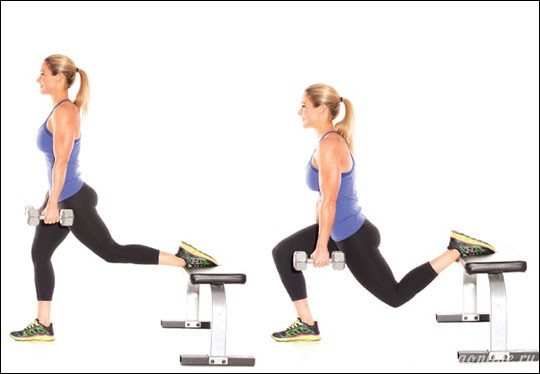
Push-up with twist . Using straight arms and toes, we perform a classic push-up. Having risen to the top position, we raise our arm up to the side, twisting the body. On the next climb, we turn the body in the opposite direction.
Double lunges . Standing straight, take a step forward with your foot. Bend your knees so that one touches the floor. We return to the standing position and take a step back with the same leg. Bend your knees again until your working limb touches the floor. Having worked on one side, we move on to the second.
Lesson 2
Squat with deadlift . After performing a classic squat, we bend forward, reaching the upper limbs with a load to the floor.
Reverse push-ups . The emphasis when doing push-ups at this level is from the mat.
Putting your hands behind your head . We take both dumbbells in closed hands and lift them above our heads. We lower them behind our backs.
Double twist.
Side lunges with swings . Take a step to the right and do a deep squat. We return to a standing position and move the same leg to the side. Keep your balance.
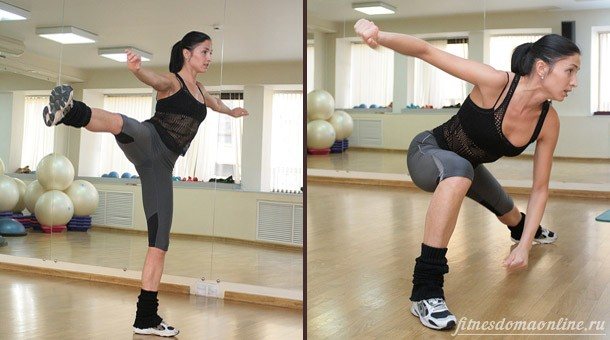
Twisting with bends . We hold our hands closed with dumbbells in front of our chest. As you exhale, make a turn in one direction behind your hands. Returning to the starting position, we bend towards the opposite leg. On the next exhalation, we turn in the other direction.
Lesson 3
Belt pull . We bend over, lowering our hands to the floor. With each exhalation, we pull the weight to the belt.
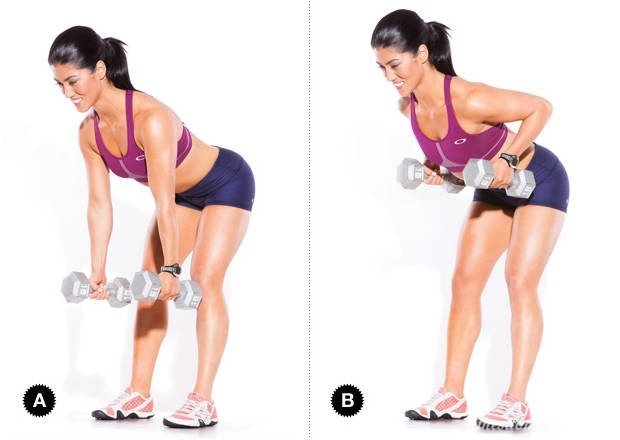
Back squats . We turn our backs to the chair. We rest our palms on the seat. Lower your buttocks down, bending your elbows. At the bottom point we linger for a few seconds.
Oblique crunches.
Raising arms . We lie down on the bench with our backs. We hold our hands with dumbbells raised up. We move them apart, trying to lower them slightly below the level of the bench.

Bulgarian lunges with side raises.
Lesson 4
Slow squats . When performing a classic squat, we do not bend or straighten our legs completely. The pace should be so slow that one repetition takes about 30 seconds. The signal for the end of the repetitions will be a strong burning sensation in the muscles.
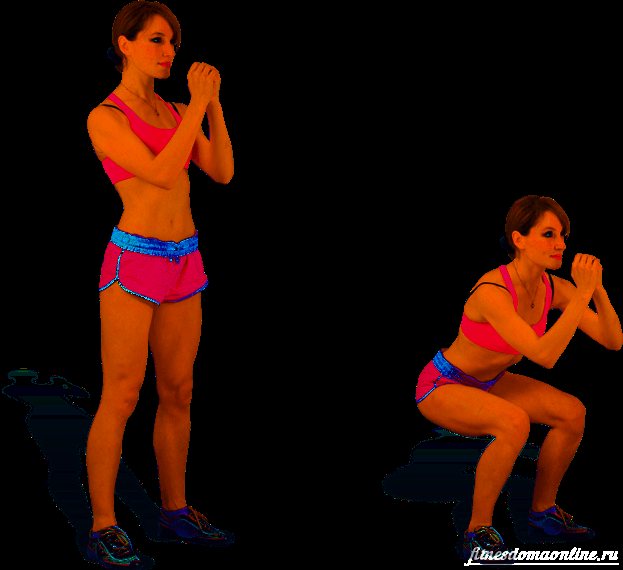
Alternating forward and reverse crunches.
Triple push-ups . For each of the three push-ups, we reduce the distance between the hands.
Thrust to the belt from a position with emphasis on the knee and elbow.
Lunges and swings to the side . Take a wide step with your foot to the left. Bend your knee and lower your buttocks towards the floor. Returning to the standing position, we move the same leg to the left. We lunge and swing in the other direction.
Workout program for losing weight at home. Dietary recommendations.
Day 1
Breakfast: From 100 g of oatmeal, cook porridge and add tbsp. a spoonful of raisins, black coffee or green tea. Don't put sugar. 360 kcal. Second breakfast: Kefir 1% - 1 glass, grain bread - 2 pieces. 157kcal. Lunch: Boil, bake or stew skinless chicken breast – 100 g, boiled rice – 100 g, tomato – 1 piece, mineral water. 246 kcal. Afternoon snack: Yogurt without any fillers, 1.5% fat – 125 g, kiwi – 1 piece. 133 kcal. Dinner: Crab meat with arugula salad, mineral water. 196 kcal. The number of calories per day is 1192.
High Protein Foods
Day 2
Breakfast: Boil 100 g of buckwheat, add vegetable oil - 1 tbsp. spoon, black coffee or green tea. 356 kcal. Second breakfast: 1 apple, lean cottage cheese – 150 g, tea or mineral water. 148 kcal. Lunch: Beef steak with vegetables, mineral water. 364 kcal. Afternoon snack: Carrot or pumpkin juice – 1 glass, grain bread – 1 piece. 152 kcal. Dinner: Low-fat fish (stewed or grilled) – 200g, green salad, seasoned with lemon juice, mineral water. The number of calories per day is 1192.
Day 3
Breakfast: Boiled egg – 1 piece, cereal bread – 2 pieces, coffee or tea. 368 kcal. Second breakfast: Pomegranate, pear and unsalted nuts – 10 pieces, mineral water or tea. 162 kcal. Lunch: Soft cheese – 60 g, octopus salad, mineral water. 162 kcal. Afternoon snack: Natural yogurt (fat content 1.5%) – 125 g, green salad seasoned with lemon. 148 kcal. Dinner: Fry an omelette from milk (fat content 0.55) and 2 proteins, green onions and tomatoes, and mineral water. 169 kcal. The daily amount of kcal is 1185.
Day 4
Breakfast: Grapefruit – 1 piece, oatmeal (according to Monday’s recipe), coffee or green tea. 345 kcal. Second breakfast: Skinny cottage cheese -200g, mix it with herbs, radishes and parsley, tea - green or black. 172 kcal. Lunch: Veal (boiled or grilled) – 200 g, green peas – 200 g, salad: fresh herbs and lemon juice, 1 apple, mineral water or tea. 134 kcal. Afternoon snack: Stew champignons (200 g) together with tomatoes and onions and season with 1 tablespoon of sour cream (fat content -10%), one apple, mineral water or tea. 134 kcal. Dinner: Vegetable salad and Parmesan cheese, mineral water. 182 kcal. Daily calorie intake – 1185
Day 5
Breakfast: Dried apricots – 60 g, grain bread – 2 pieces, cheese (fat content 17%) – 30 g, green tea or coffee. 336 kcal. Second breakfast: Egg, vegetable juice – 1 glass. 114 kcal. Lunch: Mineral water and mushroom risotto. 395 kcal. Afternoon snack: Apple, 150 g low-fat cottage cheese, green or black tea. 148 kcal. Dinner: Stewed fish -200g, green salad with lemon, mineral water. 155 kcal. Daily kcal volume – 1148
Day 6
Breakfast: Porridge from 100 g buckwheat and 1 tbsp. spoons of vegetable oil, green tea. 356 kcal. Second breakfast: Mozzarella cheese – 100 g, ripe tomatoes and basil. 148 kcal. Lunch: Low-fat fish (stewed or grilled) – 150 g, one boiled potato, green and lemon salad and mineral water. 335 kcal. Afternoon snack: Orange, yoghurt - 125 g, mineral water. 148 kcal. Dinner: Peeled shrimp – 200 g, greens and mineral water. 168 kcal. The daily amount of kcal is 1155.
Special Recommendations
Be sure to prepare your muscles for the upcoming loads, so start each session with a warm-up.
When finished, give your muscles a chance to stretch by doing several stretching exercises for the main group of muscle tissues that were maximally involved during the current workout.
At any level, it is necessary to supplement strength training with cardio exercises. This could be jumping, running, jumping rope or exercise equipment. Cardio exercises can be alternated with the main ones and performed on recovery days after strength training.
Let’s not forget that even the most well-designed sports program does not exclude requirements for nutrition and drinking regime.
The most key point is regularity. After taking a short break, you will have to start all over again.
Dosed load
Do not rush to load if you are overweight. It should be increased gradually so as not to harm organs and sensitive tissues.
It is important to consider your chronic diseases and predisposition to them, especially if it is the spine or heart.
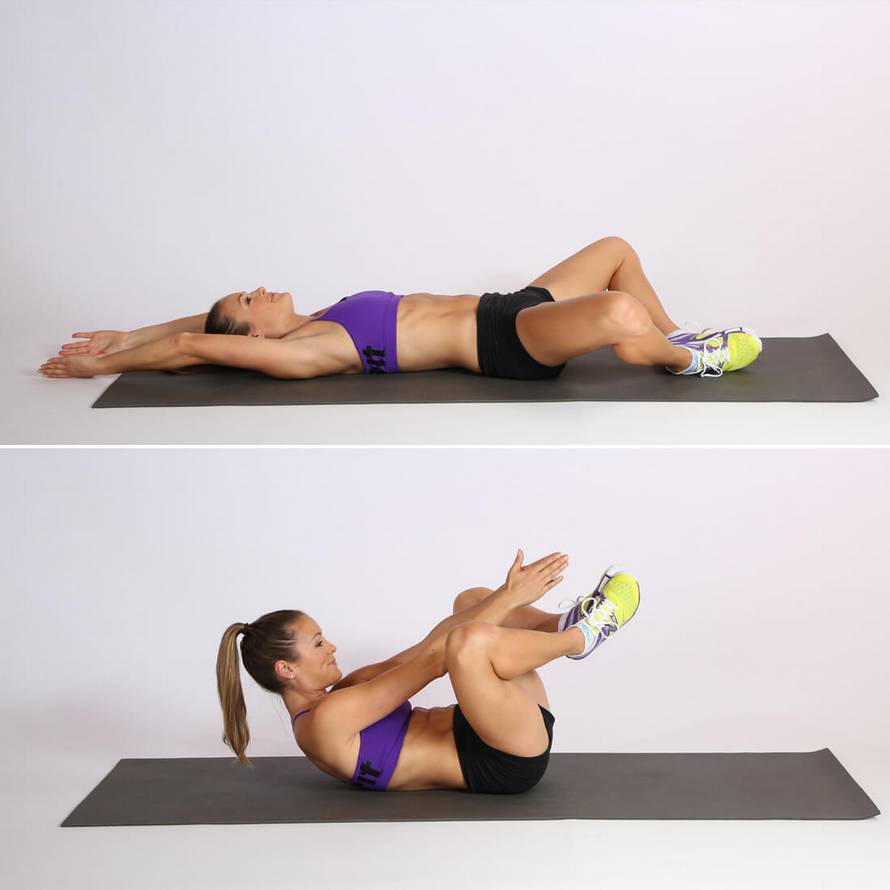
Three classes of half an hour a week at an average pace for beginners is the best option.

If there are no complications, gradually switch to 4-5 times for 45-50 minutes with an additional number of approaches.
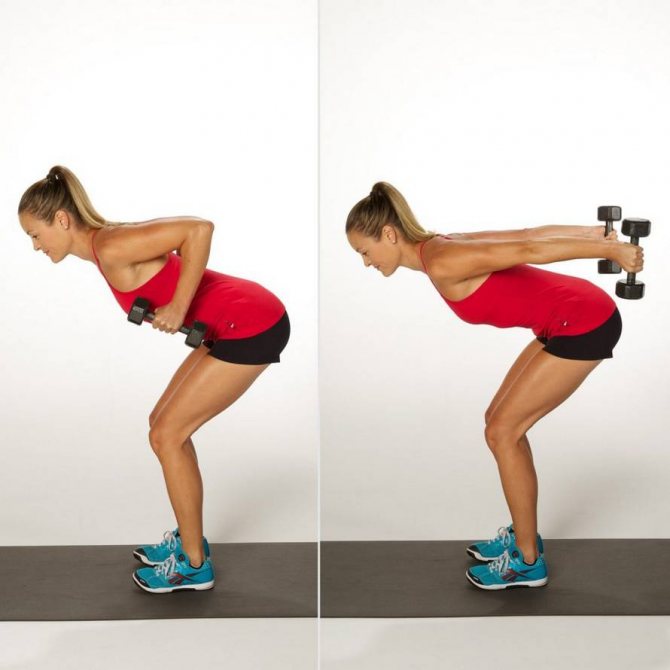
Correct end of training - cool down
At the end of the workout, stretching is necessary. Sitting on the floor and spreading your legs as wide as possible, you need to smoothly stretch your body forward, left, right. Next, lie down on a flat surface and stretch your arms and legs crosswise towards each other.
A cool-down will help the blood to be evenly distributed throughout all vessels, and the dangers of blood stagnation will bypass you. To calm down after a workout, you can take a short walk outside or at least around the house.
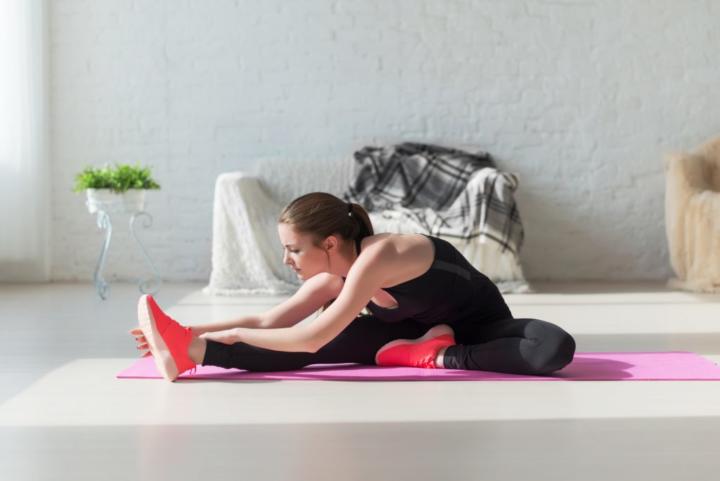
Lying leg raises
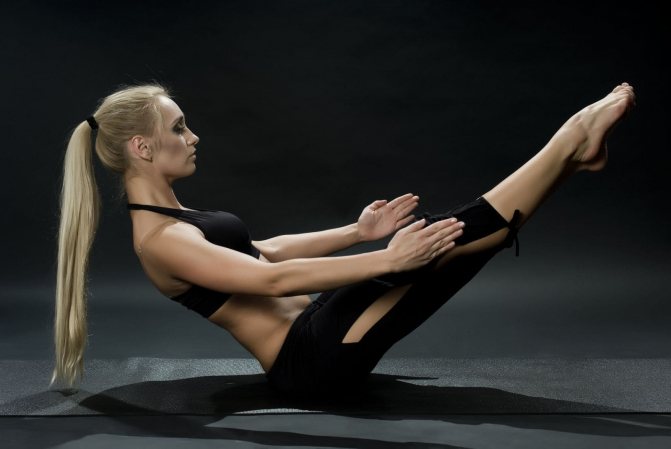
The exercise is also known as the book exercise. It will be appropriate for those who have mastered full push-ups from the floor from a lying position. If push-ups mainly train the upper body, then the “book” pumps up the abs, lower back, buttocks and thighs. Together, these exercises create favorable conditions for weight loss caused by fat deposits, including in the thighs, buttocks and abdomen. Due to the fact that the load on the lower body is moderate, it does not lead to a noticeable increase in body volume in these places.
Don't forget about proper nutrition
The effectiveness of weight loss training can be significantly increased by eating a balanced diet and taking special sports supplements. Proper nutrition for fitness should be carefully considered both before and after training. You should remember the general rule - it is better to eat more often, but less.
Main principles of nutrition:
- abstinence from alcohol – it helps the accumulation of fatty deposits;
- removing foods high in oil, sugar, and fat from the diet, replacing them with healthier alternatives;
- emphasis on protein-rich foods;
- fruits and vegetables are required;
- using special supplements for weight loss. Fat burners have been shown to be effective and improve workout results for many years.

Step exercises
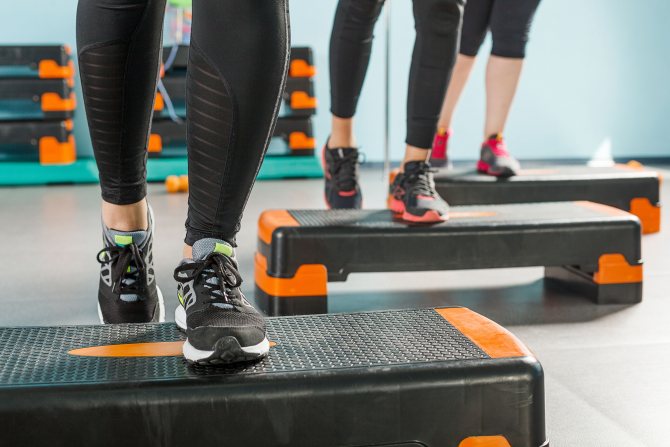
They are less tiring than jumping rope, and in terms of energy consumption they are only slightly inferior to running. Step exercises work the leg muscles very well, from the feet to the hips. The gluteal muscles and abdominal muscles are trained, especially the lower part. Step aerobics improves blood supply to the pelvic organs, eliminates stagnation in this area of the body, which has a positive effect on women's health.
It should be borne in mind that, like running, exercise on a step platform leads to muscle growth in the lower body and an increase in the volume of the hips and buttocks.
